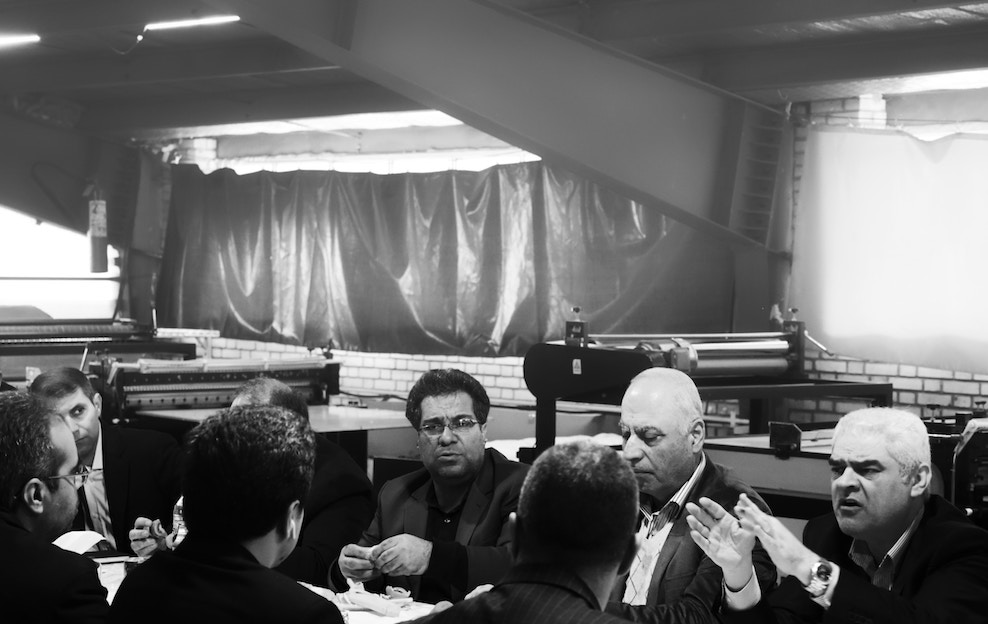Even if you don’t yet know the term bikeshedding, you’ve likely experienced it.
Have you ever found yourself in a meeting discussing something relatively unimportant, yet the time and energy everyone poured into the topic seemed to go on and on?
It seemed that everyone had an opinion and needed to have a say. And for this reason the discussion continued far past the time it should have taken.
What is Bikeshedding?

The term bikeshedding is also known as Parkinson’s Law of Triviality.
The term was coined by Cyril Northcote Parkinson, a British Naval historian and author.
He’s also the guy responsible for the Parkinson’s Law you’re already familiar with, which states that “work expands so as to fill the time available for its completion.”
(My husband made sure I knew this when we were engaged and I pondered how long we’d need to plan our wedding.)
In Parkinson’s Law of Triviality, he explains that people will give more energy and focus to trivial or unimportant items than to more important and complex ones.
Parkinson’s Law of Triviality states that people will give more time and energy to trivial items than to more important and complex ones.
He gave an example of a committee responsible for approving plans for a nuclear power plant. The committee spent only a short amount of time quickly approving the nuclear power plant, and instead invested most of their energy arguing over the design of an onsite bike shed.
The reasons for this are that a nuclear power plant is so large and complex that many in the discussion don’t understand it well, and assume that all the details have already been worked out by others.
The bike shed, on the other hand, is simple to understand, and everyone wants to have input on the topic.
The phrase was made popular by Poul-Henning Kamp when he used it in the software development community in a similar situation in which the discussion on a topic was inversely proportionate to the gravity of the topic.
Why do we do it?

It’s easier to focus on things we know more about, or things that are clearer to us. The bike shed effect causes people to gravitate toward topics they can speak on more easily.
Additionally, people want to feel like they’ve contributed. And it’s easier to contribute to a topic you can understand.
If my team is talking about software development and the technical integration design for application changes we’re making, I can’t contribute much to that technical design. It’s outside of my wheelhouse. But if you want to know where to hold the offsite software design workshop, I have some ideas and feel confident others will, too.
And if picking the location is an agenda item in a planning meeting, we could spend a lot of time on it.
The bike shed effect can be attributed to the fact that people want to weigh-in on topics. They want to feel like they’ve had a say or impact.
It could be part of human nature.
But it can also cause your meetings to get bogged down in minutiae.
How to Correct Bikeshedding?

1. Have clear goals for the agenda items
Ensure that your agenda meeting goals are clear enough for the group to be able to address them. If you have a meeting goal to simply discuss a topic, your team won’t be clear on what’s expected of them in the meeting.
It’s far more effective to state that your goal is to accomplish something specific, such as define small committees, define the scope, or make a decision on a specific item.
You may wish to read: Improve Your Meetings with This One Simple Step
2. Time-box your agenda
To keep participants from spending way too much time on an item, timebox it, and hold the group to that limit.
3. Front-load your agenda with more important items
To ensure that you spend the needed time on the most important items, put them at the beginning of your agenda. If you do need extra time for a more important item, at least you’ve got it first.
4. Recognize bikeshedding
Now that you know what bikeshedding is, you can be more aware when it’s happening. If your group is prone to this behavior, make sure they’re familiar with it, too. You can even share this article with them.
5. Call it out
The term “bikeshedding” is one that most people aren’t familiar with. If needed, you can use other phrasing to convey your point more effectively.
And you can do it respectfully. Saying something like this…
“It seems we’re spending too much time on lower priority items…”
“It would be more beneficial to move on and spend more time on XXX topic.”
“I appreciate the passion the group has for this topic. However, our time would be better spent on…”
“I appreciate the passion the group has for this topic. However, we need to finalize a decision.”
6. Get Agreement to Move on
Once you’ve identified and called out the bikeshedding behavior, the group can agree to move on to the more important topic(s). If the goal is to make a decision, have the group vote, call it done, and move on.
If the topic comes up again, you can Kindly remind them that a vote was taken, a decision had been made, and the item is closed.
7. Agree to hold each other accountable going forward
This requires trust among members of the group. Ensure you’re creating and maintaining a culture of respect and support in your organization. This makes it even easier to speak openly on topics that could be perceived as rude by others. It also makes it easier for folks to feel comfortable speaking up.

Bonus: Use a cue to indicate when you need to move on from a topic
If the problem is pervasive, you might opt for a cue that the group has all agreed upon.
In my work, and elsewhere, I’ve seen E.L.M.O. cards. In this case, ELMO stands for Enough, Let’s Move On. You can purchase these
Summary
Now that you know what bikeshedding is, you can be a better steward of your meeting time and focus.
You’ll be able to educate your attendees when needed and keep the meeting moving forward.
Remember that as the facilitator, it’s your job to manage the meeting and keep it productive.
But you can do this even as an attendee. I guarantee that others will appreciate it, and they’ll hopefully be more aware of it also going forward.
Post Note:
I’m dedicating this post to Micky at Moe’s Southwest Grill at East Chase in Montgomery, Alabama (Moe’s 183). I took a break while visiting my sister in the hospital, and popped over to Moe’s to have lunch and do a bit of work. Micky went above and beyond to ensure I was able to do
Thanks, Micky!

I am 60 year old who was diagnosed 24 months ago with Parkinson’s. I have severe calf pain, muscle pain, slurred speech, frequent falls, loss of balance, difficulty in getting up from sitting position, I was having a problem accepting my diagnosis, even though I’ve read every thing I can find to read. I’ve been put on Sinemet 3 times daily but it doesn’t seem to be helping. I also have difficulty writing. Getting in bed, turning over.this year our family doctor started me on ( Health Herbs Clinic ) Parkinson’s Disease Herbal mixture, 6 months into treatment I improved dramatically. At the end of the full treatment course, the disease is totally under control, no case of Parkinson’s disease, hallucination, weakness, muscle pain or tremors. I’m strong again and able to go about daily activities. Visit Health Herbs Clinic website www. healthherbsclinic. com
I am 60 year old who was diagnosed 24 months ago with Parkinson’s. I have severe calf pain, muscle pain, slurred speech, frequent falls, loss of balance, difficulty in getting up from sitting position, I was having a problem accepting my diagnosis, even though I’ve read every thing I can find to read. I’ve been put on Sinemet 3 times daily but it doesn’t seem to be helping. I also have difficulty writing. Getting in bed, turning over.this year our family doctor started me on ( Health Herbs Clinic ) Parkinson’s Disease Herbal mixture, 6 months into treatment I improved dramatically. At the end of the full treatment course, the disease is totally under control, no case of Parkinson’s disease, hallucination, weakness, muscle pain or tremors. I’m strong again and able to go about daily activities